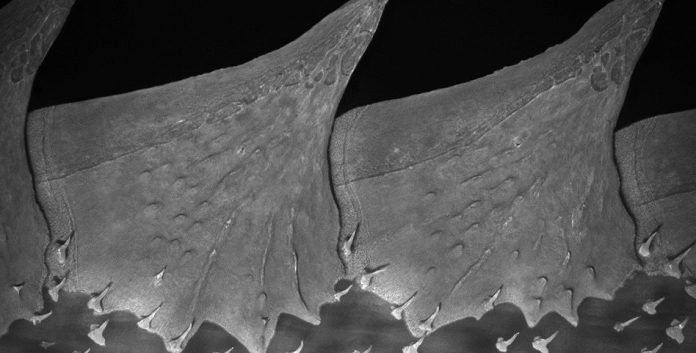
Around 350 million years ago, the ocean was full of soft-bodied animals, including some that would eventually evolve into humans and all modern vertebrates.
These creatures needed some protection from predators, mainly crustaceans.
So, they started developing a kind of body armor, like the pointy spines on an armored catfish or the diamond-shaped scales, known as scutes, on a sturgeon.
This armor was made of bone and/or a substance called dentine, which is also found in our teeth.
But how did these ancient fish start growing armor?
Scientists have been curious about this for a long time. Now, a new study, led by Jan Stundl at the California Institute of Technology, has made a fascinating discovery.
This research was published in the journal Proceedings of the National Academy of Sciences.
Stundl’s team has been studying special cells called neural crest cells, which are found in all vertebrates, including humans. These cells are kind of like the construction workers of the body. They travel around the developing body and turn into cells that build important structures like jaws and the heart.
In 2017, researchers from the University of Cambridge discovered that a specific group of neural crest cells, known as trunk neural crest cells, are responsible for creating the dentine-based armor in a fish called the little skate.
Inspired by this, Stundl and his team wondered if the same cells could also create the bone-based armor in other vertebrates.
The scientists decided to investigate this idea by studying the sturgeon fish, specifically the sterlet sturgeon. Why sturgeon? Because they haven’t changed much from their ancient ancestors, making them perfect for studying evolution.
The team studied sturgeon embryos and used a fluorescent dye to track the trunk neural crest cells as they moved around the developing body. After a couple of weeks, the sturgeons started developing their bony scutes.
The researchers found the dyed cells exactly where the scutes were forming. They also discovered that these dyed cells carried genetic signs that they were becoming bone-forming cells, called osteoblasts.
So, it seems like the trunk neural crest cells really are responsible for creating the bony armor that helped ancient fish survive and evolve into other animals, including us!
Studying non-traditional organisms like sturgeon isn’t easy, but it allows scientists to answer big questions about evolution, says Stundl.
By looking at different animals and their developmental stages, we can better understand the small changes in embryonic development that led to the diverse life forms we see today.
Follow us on Twitter for more articles about this topic.



